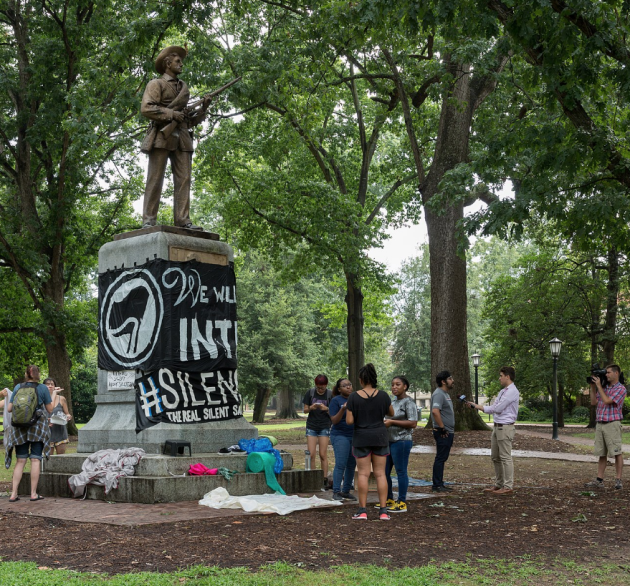
What’s a Jewish Ritual Doing at a Confederate Monument?

Photo credit: Martin Kraft
Where might it be appropriate, in this day and age, to say a prayer for the destruction of idols? For Abby Weaver, a student at Smith College who grew up in Chapel Hill, North Carolina, the best site for this prayer is the student sit-in in front of UNC Chapel Hill’s “Silent Sam”—a confederate monument.
Undergraduates at UNC are holding vigil at Sam’s feet—sleeping out on air mattresses, talking to passersby during the day and drunk students at night, and occasionally confronting white nationalist counter-protestors. Weaver, along with a group of others from the local Jewish community, led Shabbat services at the site of this protest.
Silent Sam was erected in 1913 by the United Daughters of the Confederacy as a monument to UNC students who served as confederate soldiers in the Civil War—and as a warning to Black North Carolinians, in the Jim Crow South, that UNC was still an institution of white supremacy. At the monument’s dedication, Julian Carr proudly told a story of anti-Black violence: “100 yards from where we stand, less than 90 days perhaps after my return from Appomattox, I horse-whipped a Negro wench, until her skirts hung in shreds, because upon the streets of this quiet village she had publicly insulted and maligned a Southern lady.” For decades, Silent Sam has stood at the heart of UNC’s campus as a monument to racial oppression: in fact, Alice Sparberg Alexiou, writing in Lilith last year, remembers how Silent Sam inflected her mother’s experience of anti-Semitism at UNC in the 1940s. For decades, Black students have organized to demand the statue’s removal.



